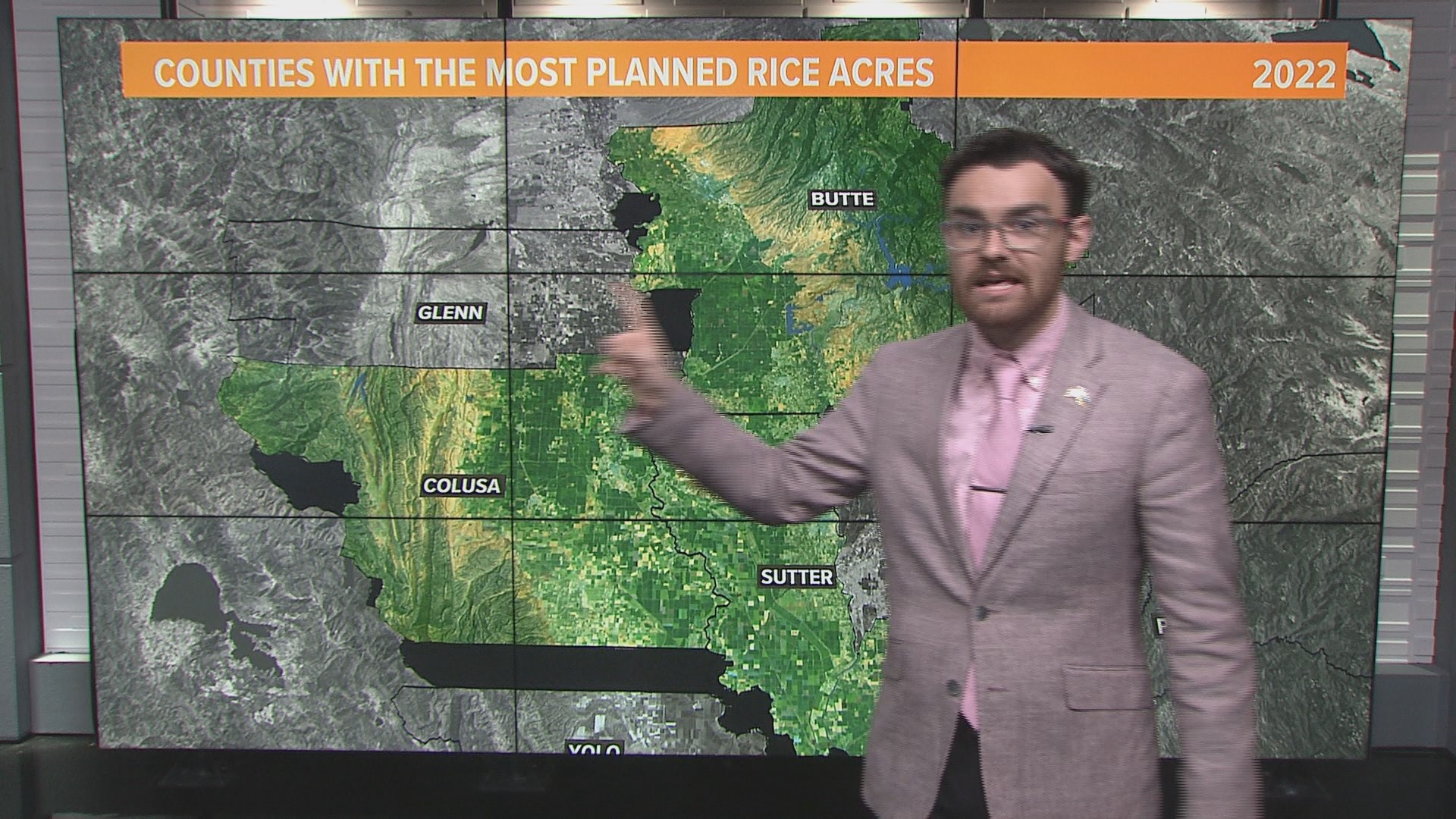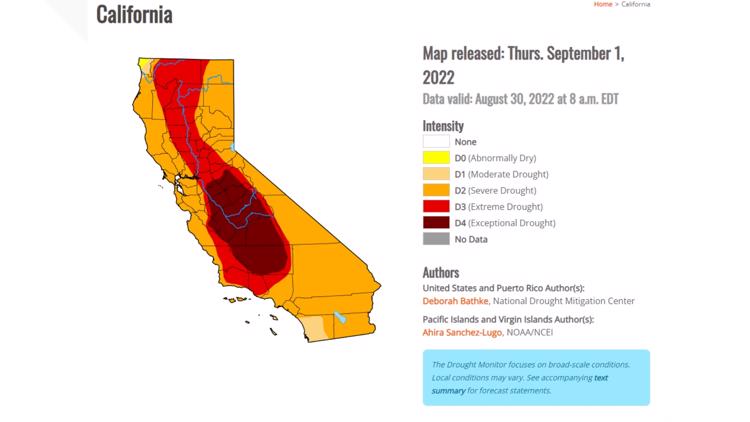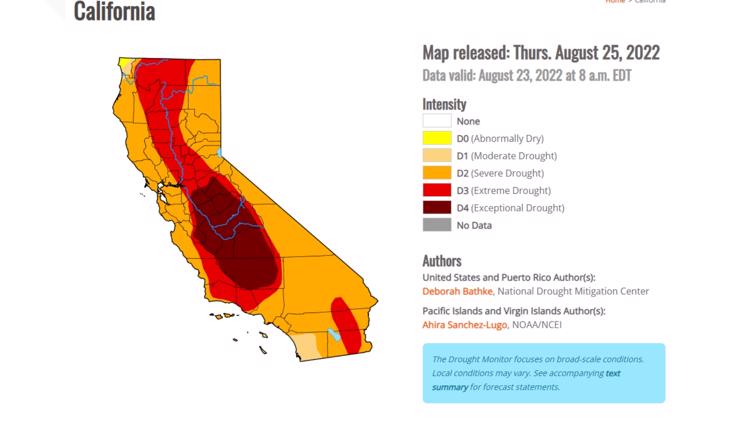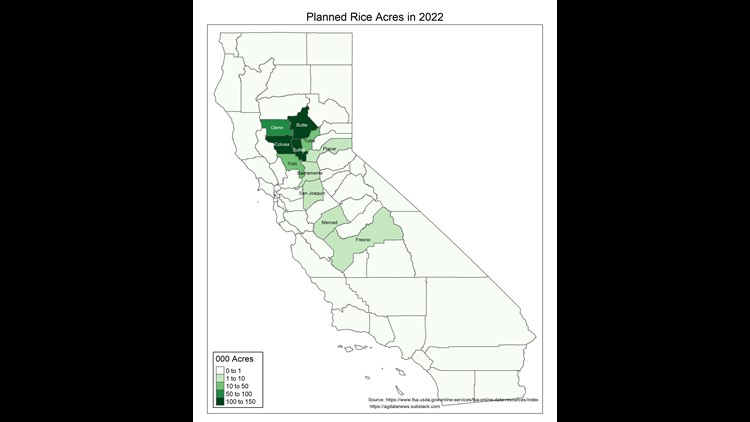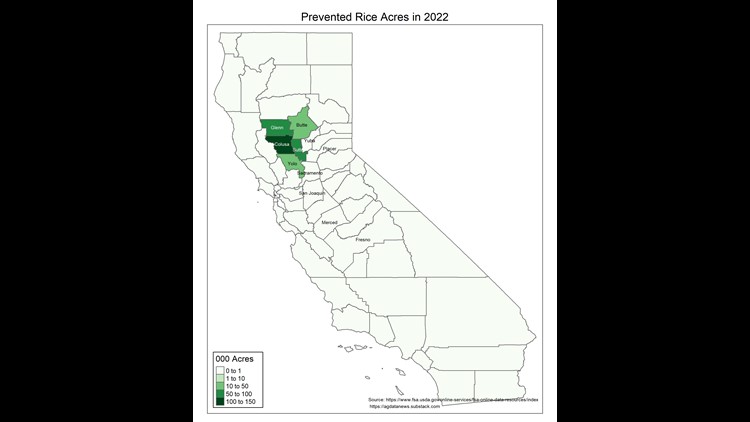SACRAMENTO, Calif. — As the calendar turns to September, over 37 million Californians find themselves living under drought conditions for a third straight year.
The latest drought monitor, released Thursday, shows slight relief in the southern California desert but no change elsewhere. Over 40% of the state is in extreme drought, and 17% is in exceptional drought - the highest rating given out.
With record heat expected over the Labor Day weekend and beyond, the state will be roasting in the sun, and it is possible more of California dives deeper into drought with the wet season still many weeks away.
September 1/August 25 drought comparison
In a normal, non-drought year, farmers across the valley would be preparing for the harvest of one of California's most prominent crops, rice. However, this is not a normal year.
RELATED: Sacramento Weather Forecast
A lack of water has greatly harmed California's agriculture industry, specifically rice farmers. Rice production is a heavy water consumer, being the fourth largest water consuming crop in California, according to the Department of Water Resources.
Aaron Smith, professor of Agricultural Economics at UC Davis, said the state was only able to plant 55% of the amount of fields as it planned due to a lack of water. However, eastern counties were less impacted than western ones. While Butte County only lost 17% due to its groundwater resources, Colusa County lost 84% of its rice acreage and Glenn County lost 75%, Smith said.
Much of this land is idle, rather than fallowed, according to Smith. He said fallowed land functions as "part of the plan" as opposed to idle land, which is considered prevented planting, or out of the farmer's control.
"Farmers can get insurance from the government in case of a failure of a crop, so what happened in the case of rice this year, farmers said, 'We want to plant a whole lot of rice' and then they looked around and said, 'We don't have any water; we can't plant that rice.'"
However, these farmers are still eligible to receive insurance payouts due to the prevented plantings, according to Smith.
Rice planting 2022
California is the second largest rice-producing state behind Arkansas, producing about $900 million in production value per year, according to the UC Davis U.S. Crop Data App.
"That rice would normally bring in on the order of $900 million of total revenue into the north part of the valley, so by cutting that in half, that's a lot of revenue that's lost to that region," Smith said.
According to a UC Davis report, the Sacramento Valley region stands to lose around $1.3 billion in economic income, 14,300 agriculture-related jobs and $504 million in lost labor income. Drought has also led to state's rice industry facing more than $703 million in impacts to areas including rice mills, dryers and suppliers
Despite the loss in planted acres, he doesn't expect the lack of rice production to raise prices much.
"The rice that we grow in California is mostly a short-grain rice that's used in sushi and a lot of sort of similar dishes like that. There is going to be a less than normal amount of rice produced in California, but we can import that from other countries," Smith said.
Rice acreage will likely rebound once this drought ends, but this year's massive reduction feels like a harbinger of tough times ahead for California rice, Smith said in his blog.
"We can expect going forward, as the climate continues to warm, less water availability coming out of those big lakes like Shasta, that give the state water," said Smith. "We're not getting as much that's coming down in the snowpack and filling out the lakes. So going forward, it is going to mean changes in the state."
WATCH ALSO:

